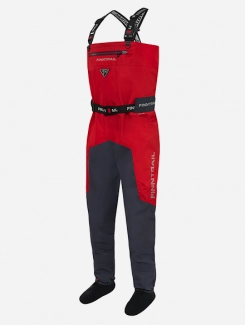Tips for Responsible Off-Roading
ATVs and UTVs are big, powerful, noisy machines. How we use them matters to others, to the environment we love to ride in, and to our safety. If you would like to learn more about environmentally friendly off-roading, why it’s important and how to do it, you’ve come to the right place.

Why Responsible ATV Riding is Important
Some people are already concerned about these things and eager to learn how to minimize their impact, but others feel restricted by having to worry about these things and don’t understand why it’s necessary.
There are two very good reasons why every off-roader should be concerned about riding responsibly:
- Trails and public lands may refuse access to ATVs and UTVs
- Harming nature destroys the places we want to ride
Both of these points boil down to one simple thing: less riding in our future.
If you want to make sure you can continue to enjoy your favorite hobby, it’s important to ride responsibly now.

How to Minimize Your Impact
The next step is to learn how to ride responsibly.
Be Mindful of Where You Ride
ATV trails and public lands designate certain land for ATV use and some land not for ATV use for a reason. It is either hazardous to us or harmful to something else. It is smart to follow guidelines and only ride where ATV use is allowed. You also want to stay on existing trails and not venture from or widen them. Creating a new trail or widening the trail could cause issues you can’t see as a casual rider. Particularly avoid wetlands, lakeshores, meadows, historical sights, wildlife habitats, designated wilderness areas, and similar areas that are likely to be damaged by your machine. Only cross streams where the trail crosses it.
Riding Smart
Roosting on turns, excessive wheel spinning, and using throttle to get out of wet conditions can cause damage to trails and public lands. It’s also best to only go mudding in mud parks rather than tackling wet days on your average trail.
Respect Others
There are many big and little ways that your ATV riding could be a problem for someone else. It’s loud, and it can frighten livestock and pets, damage property, interfere with someone else’s hobby and work, and more. We should all be able to do the things we want and need to do. You can respect others by making sure to not ride on private property, pay attention to the people around you, leave gates as you find them, and yield the right of way when people are passing.
Educating Yourself
You can prepare yourself for some of the potential issues listed above such as trying to ride where ATV use is restricted or on private property, the rules for trails, and when you are likely to be near people engaged in other activities by learning about your intended riding spot before you visit. Also, taking safety classes and going on your adventure prepared with knowledge of your equipment and a well-running machine will keep you safe.

Reducing Harm
Do not litter, and try to pick up any waste you unintentionally produce. It’s best to bring a trash bag with you to collect your trash in to make sure it doesn’t get loose. You can also pick up litter you find that others have left and put it in your trash bag. You have it; might as well tidy up. When camping, be careful with fire and only start a fire where there is not a red flag warning. Using a spark arrestor can keep you from accidentally starting a fire from sparks while you are riding. You can also make sure to not spread invasive species by wearing proper wading boots and always washing your ATV and its support vehicle after a ride.
Takeaway
This post is just a general overview of principles and practices for responsible off-road riding. Now you are prepared with not just an idea, but a practical know-how. It also covers minimal impact camping, because camping is one of our favorite activities to include in off-roading.









